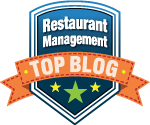
We are excited to announce the release of our newest feature, Conditional Logic! This feature allows you to highlight important information, draw attention to critical metrics, and create visually engaging data presentations. Discover how you can leverage this versatile feature to enhance your restaurant reporting.
What is Conditional LogicConditional Logic is a powerful feature that enables the dynamic formatting of data.
With Conditional Logic, you can:● Change the text color
● Modify the background color
● Adjust the font style
● Display KPIs
● Add new columns
These formatting changes are triggered when the data meets specific conditions that you define.
Conditional Logic can help make patterns and trends on your reports more apparent. For example, you can create a report following Gross Sales per day by store and use different coloring based on increments of 1,000.

Where to find Conditional Logic
The Conditional Logic feature can be found in the Report Options menu. To access Conditional Logic, first create or open a report. Next, click the Report Options gear symbol. Then, click on the arrow next to Features to open the features menu and select Conditional Logic.

Conditional Logic Definitions
There are four different elements that work together to create reports using conditional logic:
- Conditions
- Statements
- Expressions
- Actions
Conditions are the scenarios applied to a measure. For example, Gross Sales greater than $4,500 is a condition.
Statements use the Conditions you created to create an Expression that will be used to apply Actions to the report.
Expressions allow you to create a scenario with the Conditions you defined. For example, Gross Sales greater than $4,500 AND Check Count between 400 and 800.
Actions are where you provide the information of what happens when the Conditions in the Statement are true or false. An example of an Action is changing the font or background color of an existing measure or creating a new column.
How to Use Conditional Logic
When you open the Conditional Logic feature under the Report Options menu you will first be prompted to add conditions to your report. Select "Add Condition" and the Conditions modal will open.

From here you will create your Condition(s) by:
- Naming your Condition
- Selecting the measure for which you'd like to apply the condition
- Choosing your operator ( = equal to; <> not equal to; > greater than; < less than; >= greater than or equal to; <= less than or equal to; >< between)
- Entering a value
You can create multiple conditions. Once a condition is created the Statements tab will appear.
Next, it's time to add a Statement by clicking "Add Statement".
 The Statement section is where you will create an Expression that will be used to apply Actions to the report. To create an Expression, simply drag and drop the Conditions along with AND/ OR functions into the Expression area. As you build the Expression you will see the information displayed in the blue box as an English sentence. The English sentence can be used to navigate to different areas of the Statement. Once the Expression is created click "Next".
The Statement section is where you will create an Expression that will be used to apply Actions to the report. To create an Expression, simply drag and drop the Conditions along with AND/ OR functions into the Expression area. As you build the Expression you will see the information displayed in the blue box as an English sentence. The English sentence can be used to navigate to different areas of the Statement. Once the Expression is created click "Next".
This will take you to the Actions section where you create the action of the Statement.
 You have a variety of options in creating your action.
You have a variety of options in creating your action.
Action options include:
- Formatting an existing measure
- Change the font color
- Change the background color
- Change the font style
- Create a new column
- Add text
- Add number
- Add a Key Performance Indicator (KPI)
- Apply an action to data that does not meet Statement criteria using Else

Our beta testers are very excited about the expanded KPI and other visual options. Conditional Logic can also be used on comparison reports.
Conditional Logic Report Example

The Conditional Logic report example above is highlighting restaurant locations where gross sales is greater than $4,500 and check count is between 400 and 800. The locations that met this criteria are marked in the new column we created called "Met Criteria" with the text "Yes", a green background and a red KPI arrow. The locations that did not meet the criteria are marked in the "Met Criteria" column with the text "No" and a red KPI star.
The possibilities are endless for utilizing this dynamic new feature to showcase vital data, emphasize key metrics, and craft visually compelling presentations.
We're excited about bringing these new enhancements to our clients to improve their user experience and the functionality of the Mirus platform. Improvements in Mirus are driven by our clients. Do you have suggestions or ideas? We want to hear from you. Use the button below to share your feedback.
About Mirus:
Mirus provides services in data management and solutions in custom reporting for the restaurant industry.
Enjoyed this blog? Share it using the social buttons at the top of the page and leave your thoughts in the comment section below.









.png?width=50&height=50&name=Mirus%20Logo%20(1).png)